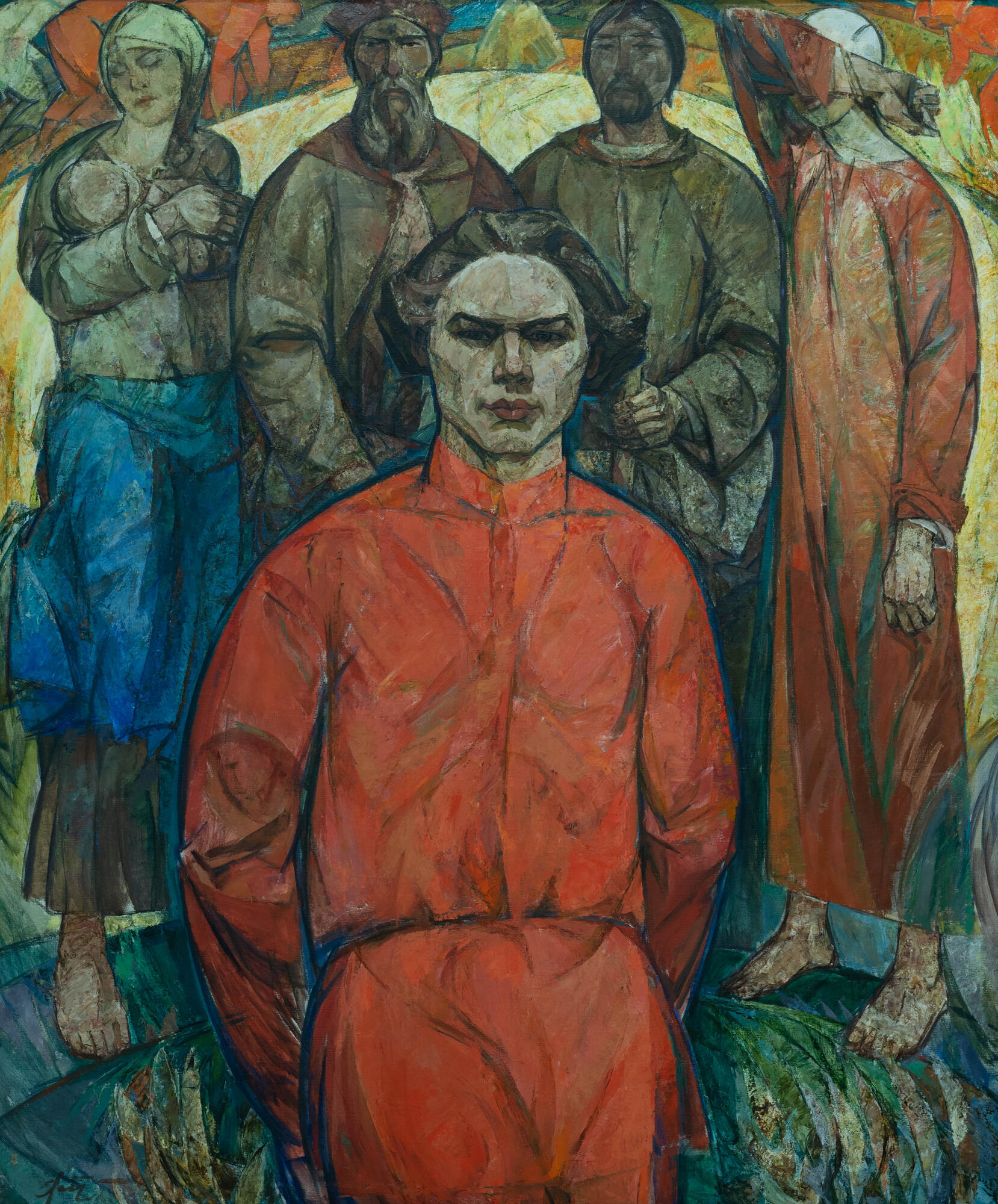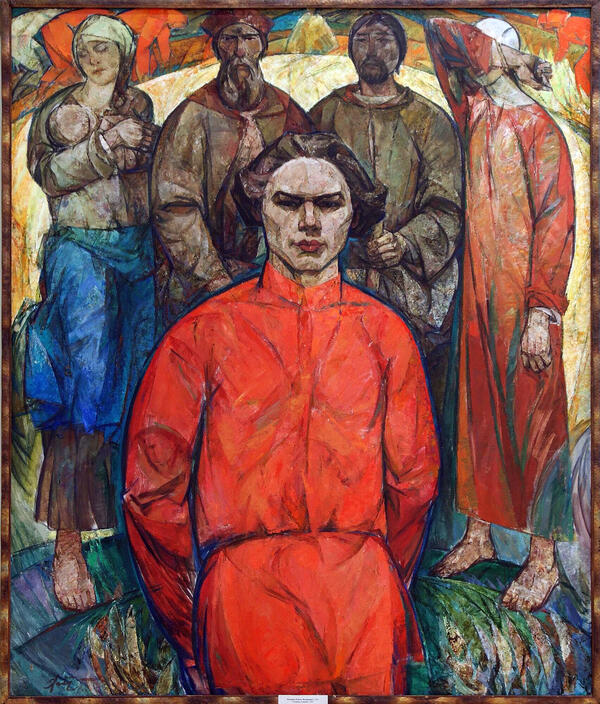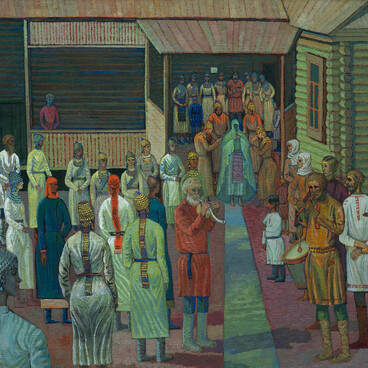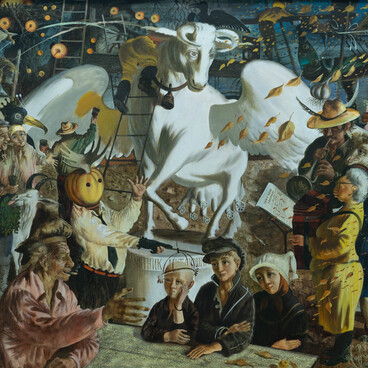Revel Fyodorovich Fyodorov is a painter, graphic artist, muralist, and organizer of fine arts events. For a long time, he was the chairman of the Chuvashia Artist’s Union and did a lot to preserve and develop this art organization between the 1990s and the 2000s.
The artist’s work is divided into two periods. While his early pieces demonstrate the influence of the “austere style”, subsequently, the color palette in his paintings created at the turn of the century seems updated: the freshness of colors becomes more evident and a different compositional structure is used.
The painting “Śeśpĕl”, first presented at the regional exhibition “Big Volga” in the winter season of 1969/1970 in Ulyanovsk, is a symbolic painting and one of the artist’s first landmark works. It seems as if the painter captured not just a specific event with precise time reference but rather the time itself. And the time is not the real one when Mikhail Śeśpĕl lived and worked, but rather the one reflected in the poetry of this extraordinarily talented young man, who illuminated the horizon of Chuvash literature like a shooting star.
This painting became one of the turning points in Chuvash art: along with the works of Anatoly Mittov and Vladimir Ageyev, it made a significant contribution to exploring its national coloring. Previously, the national part was introduced only as an ethnographic element, not affecting the manner of painting, compositional, color, and dynamic features of paintings in any way; while the presented work shows a different perception of the rich national culture.
The emphasized silhouettes, clear outlining of forms, simple rhythms, symmetrical compositions, and balanced patches of color are all close to the artistic principles of folk art, yet they also bring a certain graphic quality to the canvas. All this, combined with the bright, almost local color spots, as well as the peculiarities of the compositional structure, makes this picture reminiscent of Old Russian icon painting. The artist is known to collect icons and have a good knowledge of them. His painting also shows the influence of Petrov-Vodkin’s spatial composition built on perspective. The rounded earth behind the figures, the curvilinear perspective — these rounded outlines seem to emphasize the idea of eternity and closed space.
The artist’s work is divided into two periods. While his early pieces demonstrate the influence of the “austere style”, subsequently, the color palette in his paintings created at the turn of the century seems updated: the freshness of colors becomes more evident and a different compositional structure is used.
The painting “Śeśpĕl”, first presented at the regional exhibition “Big Volga” in the winter season of 1969/1970 in Ulyanovsk, is a symbolic painting and one of the artist’s first landmark works. It seems as if the painter captured not just a specific event with precise time reference but rather the time itself. And the time is not the real one when Mikhail Śeśpĕl lived and worked, but rather the one reflected in the poetry of this extraordinarily talented young man, who illuminated the horizon of Chuvash literature like a shooting star.
This painting became one of the turning points in Chuvash art: along with the works of Anatoly Mittov and Vladimir Ageyev, it made a significant contribution to exploring its national coloring. Previously, the national part was introduced only as an ethnographic element, not affecting the manner of painting, compositional, color, and dynamic features of paintings in any way; while the presented work shows a different perception of the rich national culture.
The emphasized silhouettes, clear outlining of forms, simple rhythms, symmetrical compositions, and balanced patches of color are all close to the artistic principles of folk art, yet they also bring a certain graphic quality to the canvas. All this, combined with the bright, almost local color spots, as well as the peculiarities of the compositional structure, makes this picture reminiscent of Old Russian icon painting. The artist is known to collect icons and have a good knowledge of them. His painting also shows the influence of Petrov-Vodkin’s spatial composition built on perspective. The rounded earth behind the figures, the curvilinear perspective — these rounded outlines seem to emphasize the idea of eternity and closed space.



